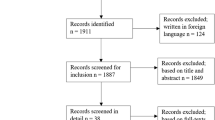Abstract
Background
The growing number of bariatric surgery videos shared on YouTube highlights the need for content and quality assessment. The aim of this study was to answer the question ‘Is watching these videos useful to surgeons and patients?’
Methods
YouTube was searched using the keywords ‘obesity surgery’, ‘bariatric surgery’ and ‘weight loss surgery’, and 100 videos retrieved using each keyword were classified based on their ‘usefulness score’ as very useful, useful and not useful. Video content; source; length and number of views, likes and dislikes were recorded. Upload sources included doctors or hospitals (DH), medical web sites or TV channels (MW), commercial web sites (CW) or civilians (CI). Between-group differences were compared.
Results
Of the 300 videos watched, 175 were included in the study; 53.7% were useful and 24.6% were very useful. There were no between-group differences in the number of likes (p = 0.480), dislikes (p = 0.592) and views (p = 0.104). Most videos were uploaded by MW and DH, also with no significant differences in the number of likes (p = 0.35), dislikes (p = 0.14) and views (p = 0.93). No videos were found with misleading information.
Conclusions
The popularity of bariatric surgery and interest of both patients and surgeons are increasing daily. Although videos on bariatric surgery on YouTube may be more useful than those on other surgical procedures, it is important that the videos are uploaded by medical professionals and that specific upload and retrieval filters are applied.

Similar content being viewed by others
References
Farnan JM, Paro JA, Higa J, et al. The YouTube generation: implications for medical professionalism. Perspect Biol Med. 2008;51(4):517–24.
Ashraf B. Teaching the Google-eyed YouTube generation. Educ Train. 2009;51(5/6):343–52.
Potomkova J, Mihal V, Schwarz D. Medical education for YouTube generation. In: Silva A, Pontes E, Guelfi A, Kofuji ST, editors. E-Learning-Engineering. On-Job Training and Interactive Teaching. Rijeka: InTech; 2012. p. 157–176.
Barry DS, Marzouk F, Chulak-Oglu K, et al. Anatomy education for the YouTube generation. Anat Sci Educ. 2016;9(1):90–6.
Lee JS, Seo HS, Hon TH. YouTube as a source of patient information on gallstone disease. World J Gastroenterol. 2014;20(14):4066–70.
Keelan J, Pavri-Garcia V, Tomlinson G, Wilson K. YouTube as a source of information on immunization: a content analysis. JAMA. 2007;298:2482–2484 https://doi.org/10.1001/jama.298.21.2482
Biggs TC, Bird JH, Harries PG, et al. YouTube as a source of information on rhinosinusitis: the good, the bad and the ugly. J Laryngol Otol. 2013;127:749–54. https://doi.org/10.1017/S0022215113001473.
Butler DP, Perry F, Shah Z, et al. The quality of video information on burn first aid available on YouTube. Burns. 2013;39(5):856–9. https://doi.org/10.1016/j.burns.2012.10.017.
Steinberg PL, Wason S, Stern JM, et al. YouTube as source of prostate cancer information. Urology. 2010;75:619–22. https://doi.org/10.1016/ j.urology.2008.07.059.
Strychowsky JE, Nayan S, Farrokhyar F, et al. YouTube: a good source of information on pediatric tonsillectomy? Int J Pediatr Otorhinolaryngol. 2013;77:972–5. https://doi.org/10.1016/j.ijporl.2013.03.023.
Brna PM, Dooley JM, Esser MJ, et al. Are YouTube seizure videos misleading? Neurologists do not always agree. Epilepsy Behav. 2013;29:305–7. https://doi.org/10.1016/j.yebeh.2013.08.003.
Liu KY, Haukoos JS, Sasson C. Availability and quality of cardiopulmonary resuscitation information for Spanish-speaking population on the Internet. Resuscitation. 2014;85:131–7. https://doi.org/10.1016/j.resuscitation.2013.0 8.274.
Sampson M, Cumber J, Li C, et al. A systematic review of methods for studying consumer health YouTube videos, with implications for systematic reviews. PeerJ. 2013;1:e147. https://doi.org/10.7717/peerj.147.
Rapp AK, Healy MG, Charlton ME, et al. YouTube is the most frequently used educational video source for surgical preparation. J Surg Educ. 2016;73(6):1072–6.
Frongia G, Mehrabi A, Fonouni H, et al. YouTube as a potential training resource for laparoscopic fundoplication. J Surg Educ. 2016;73(6):1066–71.
Author information
Authors and Affiliations
Corresponding author
Ethics declarations
The authors declare that they have no conflict of interest.
Ethical Approval
This article does not contain any studies with human participants or animals performed by any of the authors.
Informed Consent
Informed consent does not apply.
Rights and permissions
About this article
Cite this article
Erdem, H., Sisik, A. The Reliability of Bariatric Surgery Videos in YouTube Platform. OBES SURG 28, 712–716 (2018). https://doi.org/10.1007/s11695-017-2911-3
Published:
Issue Date:
DOI: https://doi.org/10.1007/s11695-017-2911-3




